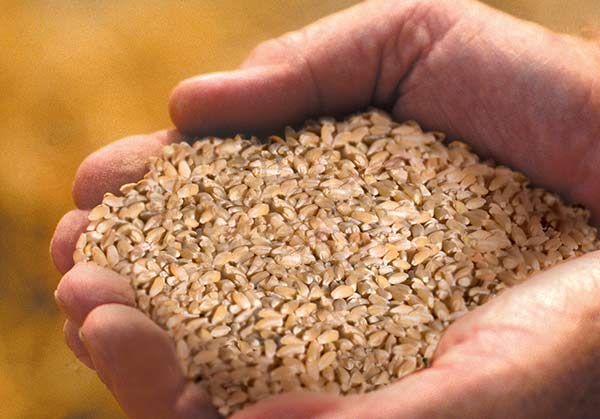Farfalle n° 93 Tricolore
Farfalle, originally from Lombardy and Emilia Romagna, take their name from their distinctive bow tie shape with a tight frill in the centre.
The condiments recommended for Farfalle are light sauces: sauces made from butter with peas and ham; white sauces with delicate flavours made from salmon and cream; sauces made from mild, soft cheeses with a dash of saffron or curry.
This pasta is also great for preparing delicious, colourful, imaginative pasta salads.
Available in 500g and 3 Kg packs.
- Cooking time: 13 min - Al dente: 11 min

play
Our method
Attention, care, experience, quality at every stage: from our mill to your table.
You may also be interested in
Mezze Penne Rigate n° 141 KAMUT® marchio di grano khorasan
Mezze Penne Rigate belong to the family of Penne, but differ as they are slightly shorter.
In Italian, the term "Penne" refers to the goose feather which was used historically to write with and was cut on a diagonal to achieve a really thin tip. The shape, obtained from a pasta tube, can be smooth or ridged, of varying length and has the typical diagonal cut of a quill.
Penne are one of the few types of pasta for which there is an exact date when it was created. Indeed, in 1865, a pasta-maker from San Martino d'Albaro (Genoa), Giovanni Battista Capurro, requested and obtained a patent for a diagonal cutting machine. The patent was important because it meant the fresh pasta could be cut like a quill without crushing it and in different lengths from 3 to 5 centimetres (mezze "half" penne or penne). The document preserved in the Central Archive of the State of Rome reads: "Up until now, a diagonal cut could only be made by hand with a pair of scissors which, in addition to being slow and time-consuming, also resulted in an irregular cut which flattened the pasta".
The smaller-sized Mezze Penne Rigate are perfect for stirring up together with creamy sauces, both red ones made with tomatoes or white ones made with cheese, or with classic vegetable soups to be eaten with a spoon.
Available in 500g pack.
Find out more





